A Perturbation Finite Element Approach for Correcting Inaccuracies on Thin Shell Models with the Magnetic Field Formulation
Volume 5, Issue 3, Page No 166-170, 2020
Author’s Name: Vuong Dang Quoc1,a), Quang Nguyen Duc2
View Affiliations
1School of Electrical Engineering, Hanoi University of Science and Technology, Viet Nam
2Faculty of Electrical Engineering, Electric Power University, Viet Nam, Viet Nam
a)Author to whom correspondence should be addressed. E-mail: vuong.dangquoc@hust.edu.vn
Adv. Sci. Technol. Eng. Syst. J. 5(3), 166-170 (2020); ![]() DOI: 10.25046/aj050322
DOI: 10.25046/aj050322
Keywords: Magnetic field, Eddy current loss, Joule power loss, Thin shell model, Magnetodynamic, Subproblem technique
Export Citations
This research makes the improvement of the errors surrounding edges and corners of thin electromagnetic regions by means of the magnetic field finite element formulation. Classical thin shell electromagnetic models are usually replaced by impedance-type interface conditions throughout surfaces that ignore errors in the calculation of the local fields (magnetic vector potentials, magnetic fields, eddy current densities and Joule power loss densities) in the vicinity of borders and corners. In this context, the inaccuracies of the local fields surrounding edges and curvatures related to the thin shell models are improved by a perturbation finite element technique, permitting to solve each subproblem on its own separately mesh and geometry, which makes reducing the computational time.
Received: 09 March 2020, Accepted: 02 May 2020, Published Online: 11 May 2020
1. Introduction
Thin shell (TS) electromagnetic models have been presented by many author [1]-[3] to neglect meshing volumic shells (Fig. 1, left) and are introduced by surfaces (Fig. 1, right) with interface conditions (ICs) related to 1-D analytical distributions across the shell thickness.

Figure 1: Volumic shell Ωt (left) and IC Γt (right).
In general, the ICs cancel corner and curvature effects, and lead to inaccuracies of magnetic fields, eddy current losses and Joule power losses in the neighbouring regions of geometrical discontinuities around borders and corners, changing with the thickness. So as to overcome with this disadvantage, a subproblem method (SPM) with a magnetic vector potential formulation for improving errors next to corners and curvatures occurring from the TS has recently presented by many author [4, 5].
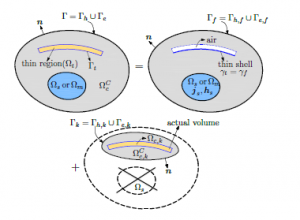
Figure 2: Decomposition of full problem into several SPs.
The idea of this article is to present an extension of the oneprocess SPM that proposes the magnetic field formulation. The hearth of this technique is based on a SPM, which consists in splitting a complete/full problem (including of stranded inductors and magnetic or conductive thin structures) into two subproblems (SPs), the complete/full solution being the superposition of all solutions for each SPs.
A problem involving stranded inductors and TS models (Fig. 2, top right) is first considered on a simplified mesh. The obtained solution is then adjusted by a improvement problem with the actual volume thin regions (Fig. 2, bottom). In this process, each SP is constrained by volume sources (VSs) or surface sources (SSs), where VSs present variations of the permeability and conductivity in volume thin regions and SSs express variations of ICs across surfaces from previous SPs. Each process allows to inherit the previous sources/solutions for new SPs instead of starting a new
complete problem for each new geometries as a traditional finite element method (FEM) [6].
2. Sequence of Pertubation Technique
2.1 Magnetodynamic subproblem
In the heart SPM, a canonical magnetodynamic SP p considered at step p is solved in a domain Ωp, with boundary ∂Ωp = Γp = Γh,p ∪ Γe,p. The eddy current density is defined in conducting part

where hp is the magnetic field (A/m), bp is the magnetic flux density (T), ep is the electric field (V/m), js,p is the electric current density
(A/m2), µp is the magnetic permeability (H/m), σp is the electric conductivity (S/m) and n is the unit normal exterior to Ωp. The source fields (bs,p and es,p) in (2a-b) are VSs, and the source fields (jsu,p and ksu,p) in (3a-b) are SSs. In general, SSs are defined as zero for classical homogeneous BCs. ICs can express their discontinuities across the negative and positive sides (γ+p and γ−p) of any interface γp (with the notation [·]γp = |γ+p − |γ−p ) in Ωp. For the idealized thin regions, these ICs are SSs that have to account for special phenomena ocurring between two sides of γp [4, 5].
2.2 Relations of SPs with SSs and VSs
As proposed in [3], the relation between SPs p (TS models and volume corrections) are respectively defined via SSs and VSs. A volume thin region Ωt,p in Ωc,p is initially removed from Ωi and then defined with the double layer TS surface Γt,p. For the magnetic field formulation (hp-conformal formulation), the coefficient discontinuity hd,t,p of the tangential component ht,p = (n × hp) × n of hp is presented across via the TS model, i.e. [3]
![]()
where the discontinuous component (hd,t,p) of the field ht,p is considered as zero along the TS border, which neglects the present magnetic fields. To present this discontinuity, it gets [3]
![]()
where hc,p is the continuous component of hp. The expressions (5) also applies on Γt,p for the tangential components ht,p, hc,t,p and hd,t,p.
The TS model combined with the ICs and BCs of the impedance BC type [3] are presented through hc,t,p and hd,t,p, that is
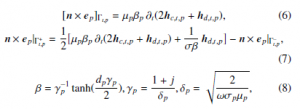
where dp is the local thickness of the TS, δp is the skin depth, ω = 2πf with f is the frequency, j is the imaginary unit and ∂t ≡ jω. It should be noted that the term −n × ei|Γ−t,i in (7) is presented as a SS for the SPs.
As presented, the inaccuracy on the TS solution of a problem p (e.g, p = u) is then improved by a volume correction SP k (e.g., p = k) which scopes with the TS hypothesis [3]. The changes from a TS region (µu and σu for SP u) to a volume thin region (µk and σk for SP k), the field sources (hs,k and js,k) in (2a-b) are defined for the total fields [5, 8]

where q ∈ P (total SPs) except the current SP u relates to the sources (bs,k and es,k) via their last calculated corrections of hq and jq.
3. Finite element weak formulation
3.1 hp-magnetic field formulation with source and reaction fields
The weak magnetic field formulation (hp-conformal formulation) is obtained via the Faraday’s law (1c) [5, 8, 9]. The magnetic field hp is decomposed into two parts, hp = hs,p + hr,p, where hs,p is the source magnetic field presented via curl hs,p = js,p, and hr,p is the reaction magnetic field. In ΩCc,p, the field hr,p is expressed through a scalar potential φp, i.e. hr,p = −gradφp. The weak forms for SPs p (p = u, k…) are [10]

where H1p(Ωp) including the basis functions for hp as well as for the test function h0i is a curl-conform function space presented in Ωp. Notation of (· , ·)Ωi is volume integral in Ωp and < · , · >Γp is the surface integral on Γp of the product of their vector field arguments. The term on surface integral Γe,p gives as a natural BC of type (3 b), usually zero. It should be noted that the source field hs,p in (12) is performed through a projection technique [11] of a known distribution js,u, i.e.
![]()
3.2 Weak formulation for the TS model
The TS model [3] occurred in the general equation (12) is defined a free discontinuous hd,t,u (p =u) along the TS and hd,u in the exterior region related to Γ+u and a BC n × eu|Γu+. This discontinuity is used as a test function h0u (h0u = h0c,u + h0d,u) in (12), where term contributions in the volume integrals in Ωu are defined on the positive side of the TS. For that, the term h[n × eu]Γu , h0uiΓu is analysed as h[n × eu]Γu , h0uiΓu = h[n × eu]Γu , h0c,uiΓu + hn × eu|Γu+, h0d,uiΓu+
![]()
where with h0d,u is equal to zero on the negative side of TS Γu−
[11]. Moreover, the term h[n × eu]Γu , hc0iΓu and hn × eu|Γu+, hd0 iΓu+ are presented by (6) and (7), respectively. Therefore, (3.2) becomes

where the surface integral term on Γe,u − Γt,u is usually considered as zero on a natural BC.
3.3 Projection of solutions between sub-models
In the strategy SP technique, the solutions found from a previous problem SP u are considered as sources (SSs and VSs) in a subdomain Ωs,k ⊂ Ωk of the SP k (current SP), e.g. from SP u to SP k. At the discrete level, the field hu in the mesh of the SP u is transferred to the mesh ot the SP k (i.e. hu,k−proj). This will be performed via a projection technique [11] of its curl limited to Ωs,k.
The field hu,k−proj is defined
![]()
where Hk1(Ωs,k) is a curl-conform function space containing the projection of hu and the test function h0 in the mesh k. Directly projecting hu instead of its curl will give numerical errors as estimating its curl.
3.4 Improvement of the TS model
The inaccuracies of the TS solution obtained in SP u is now improved by the actual volume SP k via VSs defined in (10) and (11). They are taken into account the changes from µu and σu in the TS model to µk and σk in the volume shell. These VSs also appear in (12) via the volume integrals (∂t(bs,k, h0k)Ωk and (es,k,curl h0k)Ωk ). The weak form for SP k is written as

where the field eu is also performed via an electric problem [9]. As a sequence, the field hu is transferred to the mesh of SP k via (17), where Ωs,u is limited to a single layer surrounding of the volumic shell. In the same time to the VSs in (12), SSs related to ICs [3], [5] have to extract the TS discontinuities, i.e, hd,k =−hd,u and [n × ek]Γts,k = −[n × eu]Γts,u . The involved trace [n × eu]Γts,k is generally defined through other integrals in (12), with Γts,u = Γts,k,

The surface integral in (19) is implemented in the step u. At the discrete level, the limitation of the two volume integrals in (19) is defined in a single layer of FEs on both sides of Γt,u touching γk+ = γu+ = Γ+t , because it involves only the trace n × h0k|γk+.
4. Numerical test
The practical test is a TEAM workshop problem (problem 21, model B) [12] including two coils and a magnetic shielding plate (Fig. 3). The test problem is considered in both 2-D and 3-D models.
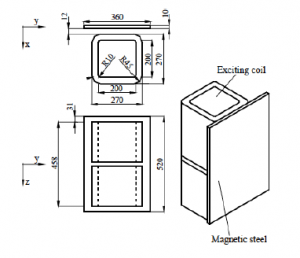
Figure 3: Geometry of the test problem 21 (model B).

Figure 4: Magnetic flux densities for the TS solution SP u (bu, top left) and volume correction solution SP k (bk, bottom right). Projections of SP u solutions (bproj, VS, top right) and (bproj, SS, bottom left) in the SP k.
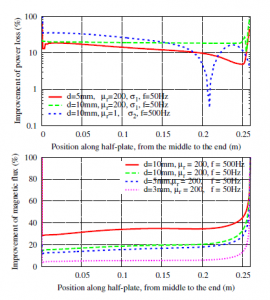
Figure 5: Relative improvements of the joule power loss density (top) and the magnetic flux (bottom) along the thin plate, with σplate =6.484 MS/m.
The first case is tested with a 2-D model: The SP u with the inductors and TS FE magnetodynamic model is solved on a lighter mesh (Fig. 4 (bu), top left). A volume correction SP k then replaces the TS FEs with the classical volume FEs containing an actual region of the thin plate and its surrounding, with a suitable refined mesh without including the inductors anymore (Fig. 4 (bk), bottom right). The projections of TS solution in TS SP u for the VS and SS are respectively pointed out (Fig. 4 (bproj, VS), top right) and
(Fig. 4 (bproj, SS), bottom left). The relative improvements of the joule power loss density and the magnetic flux along the plate are depicted in Fig. 5. They can touch several tens of percents near the end of the TS, such as 80% (Fig. 5, top) and 85% (Fig. 5, bottom), with d = 10 mm and δ = 1.977 mm for both cases. For d = 10 mm, the inaccuracy is lower than 50% (Fig. 5, top) and 55% (Fig. 5, bottom).

Figure 6: Colored maps of eddy current densities indicating the regions with relative volume improvements greater than 2% for d = 5 mm, 7.5 mm and 10 mm (from left to right), f = 50 Hz, µplate = 200 and σplate =6.484 MS/m.
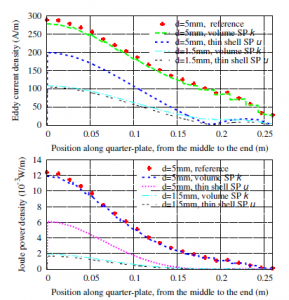
Figure 7: Eddy current density (top) and joule power loss density (bottom) for the TS and the volume corection along the vertical half edge (z-direction) (f = 50 Hz, µplate = 200 and σplate =6.484 MS/m).
The next test is considered with a 3-D model: The errors of the TS model SP u are shown in Fig. 6 (from left to right). They increase with plate thickness, specially near the ends of the plate, are perfectly improved whatever their order of magnitude. The accuracy of the improvement is directly related to the volume correction of the plate and its surrounding.
The inaccuracies on the eddy current density and joule power loss density of TS model (SP u) are improved by the significant volume correction (SP k) (Fig. 7. The inaccuracies on the local fields (eddy current density and joule power loss density) along the vertical half edge (z-direction) near the plate ends reaches 60% (Fig. 7, top) and 80% (Fig. 7, bottom), respectively, with δ = 2.1mm and d = 5mm. The volume corrections are then compared to be similar the reference solutions (obtained from the FEM) for different parameters in both cases.
5. Conclusions
In this study, a perturbation Finite Element Approach has been proposed with a magnetic field formulation for a one-way coupling in order to improve the errors around edges and corners inherent to the TS FE assumptions. The correctly improving on the local fields of magnetic flux densities, eddy current losses and joule power losses is successfully achieved surrounding the borders and corners of the TS structures. The proposed method has been developed for the one-way coupling in two steps. All the processes of the method have been successfully validated on the international practical problem (TEAM workshop problem 21, model B) [12].
The source-codes of the this technique have been being extended based on the source-codes of the SPM that was developing by author and two Prof. Patrick Dular and Prof. Christophe Geuzaine at the Dept of Electrical Engineering and Computer Science, University of Liege, Belgium. They will be then ran and simulated in the background of the Getdp (http://getdp.info) and Gmsh (http://gmsh.info) softwares developed by Prof. Patrick Dular and Prof. Christophe Geuzaine [13, 14]. These are the open-source codes for anyone to be able to write adapt source-codes for solving studied problems (if possible).
- L. Kra¨henbu¨hl and D. Muller, “Thin layers in electrical engineering. Examples of shell models in analyzing eddy- currents by boundary and finite element methods,” IEEE Trans. Magn., vol. 29, no. 2, pp. 1450–1455, 1993.
- Tsuboi, H., Asahara, T., Kobaysashi, F. and Misaki, T. (1997), “Eddy current analysis on thin conducting plate by an integral equation method using edge elements,” IEEE Trans. Magn., Vol. 33, No. 2, pp. 1346-9.
- C. Geuzaine, P. Dular, and W. Legros, “Dual formulations for the modeling of thin electromagnetic shells using edge elements,” IEEE Trans. Magn., vol. 36, no. 4, pp. 799–802, 2000.
- P. Dular, Vuong Q. Dang, R. V. Sabariego, L. Kra¨henbu¨ hl and C. Geuzaine, “Correction of Thin Shell Finite Element Magnetic Models via a Subproblem Method,” IEEE Trans. Magn., vol. 47, no. 5, pp. 1158–1161, 2011.
- Vuong Q. Dang, P. Dular, R. V. Sabariego, L. Kra¨henbu¨ hl and C. Geuzaine, “Subproblem Approach for Thin Shell Dual Finite Element Formulations,” IEEE Trans. Magn., vol. 48, no. 2, pp. 407–410, 2012.
- S. Koruglu, P. Sergeant, R.V. Sabarieqo, Vuong. Q. Dang and M. De Wulf “Influence of contact resistance on shielding efficiency of shielding gutters for high-voltage cables,” IET Electric Power Applications., Vol. 5, No. 9, pp.715-720, 2011.
- Vuong Quoc Dang and Quang Nguyen Duc, “Coupling of Local and Global Quantities by A Subproblem Finite Element Method Application to Thin Re- gion Models,” ASTESJ, vol. 4, no. 2, pp. 40–44, 2019.
- Vuong Quoc Dang and Quang Christophe Geuzaine, “Using edge elements for modeling of 3-D Magnetodynamic Problem via a Subproblem Method,” Sci. Tech. Dev. J.; 23 (1), pp. 439–445, 2020.
- P. Dular and R. V. Sabariego, “A perturbation method for computing field distortions due to conductive regions with h-conform magnetodynamic finite element formulations,” IEEE Trans. Magn., vol. 43, no. 4, pp. 1293-1296, 2007.
- Vuong Q. Dang, P. Dular, R. V. Sabariego, L. Kra¨henbu¨hl, C. Geuzaine “Sub- problem Approach for Modelding Multiply Connected Thin Regions with an h-Conformal Magnetodynamic Finite Element Formulation,” in EPJ AP., vol. 63, no. 1, 2013.
- C. Geuzaine, B. Meys, F. Henrotte, P. Dular and W. Legros, “A Galerkin projection method for mixed finite elements,” IEEE Trans. Magn., Vol. 35, No. 3, pp. 1438-1441, 1999.
- Zhiguang CHENG1, Norio TAKAHASHI2, and Behzad FORGHANI, “TEAM Problem 21 Family (V.2009),” Approved by the International Compumag Soci- ety Board at Compumag-2009, Florianopolis, Brazil.
- C. Geuzaine and J.-F. Remacle “Gmsh: a three-dimensional finite element mesh generator with built-in pre- and post-processing facilities,” International Journal for Numerical Methods in Engineering 79(11), pp. 1309-1331, 2009.
- P. Dular and C. Geuzaine “GetDP reference manual: the documentation for GetDP, a general environment for the treatment of discrete problems,” University of Liege, 2013.
Citations by Dimensions
Citations by PlumX
Google Scholar
Scopus
Crossref Citations
- Abdelghani Lakhdar, Aziz Moumen, Laidi Zahiri, Mustapha Jammoukh, Khalifa Mansouri, "Experimental and Numerical Study of the Mechanical Behavior of Bio-Loaded PVC Subjected to Aging." Advances in Science, Technology and Engineering Systems Journal, vol. 5, no. 5, pp. 607, 2020.
No. of Downloads Per Month
No. of Downloads Per Country
